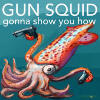I don't load anything in .45 ACP longer than 1.265. I load various 200/230 Gr RN bullets to fall between 1.260 & 1.265 OAL.
View attachment 1153058
The only way to get in serious trouble in an auto with sane charges, is to have a squib, think
the barrel is clear, and shoot another round, so be careful, make sure the barrel is clear after
any anomaly like what you experienced.
Make sure the primers are seated all the way t the bottom of the primer pockets, seat them hard,
you won't hurt them.
An old post of mine on primer seating.
"Primers need to be seated until the anvil legs touch the bottom of the primer pocket (Minimum), and then a little more so the cup pushes down around the legs, up until it hits the bottom of the primer pocket (Maximum).
If seated to little (Anvil legs not touching the bottom of the primer pocket), the firing pin has to seat it fully and then have enough energy left over to crush the priming compound between the cup and the anvil. Sometimes it does not, these are the ones that so often fire on the second try. The first try seats them fully, the second try fires them.
bds has some great primer pics here somewhere that shows the cup and anvil and how they are positioned with each other prior to seating. The anvil legs are sticking out of the cup just a little bit.
After fully seating the anvil's legs and the primer cup is hard against the bottom of the pocket, it takes a great deal of pressure at this point to damage the primer so much it fails.
It is fairly easy to seat a primer too soft, not fully seating it, so that it misfires, but difficult to seat them so hard it damages them to the point of not firing. This statement is based on my decades of seating primers with various tools. I have never had one fail from being seated to hard/deep. Not saying that with some primer tools and some gorilla grips it can't be done, but it is 100/1000 times less likely to happen than seating one too shallow/soft.
We have threads here all the time when failures to fire end up being primers seated too softly/shallow. I can't remember one where it turned out someone managed to crush a primer into submission. I would suggest to all to try it. Some priming systems simply cannot do it for mechanical reasons. Some might have enough travel to do it if you have the strength, That cup surrounded by the brass primer pocket is tough to crush. Very tough"
https://www.thehighroad.org/index.p...primers-before-shooting.832434/#post-10757047





